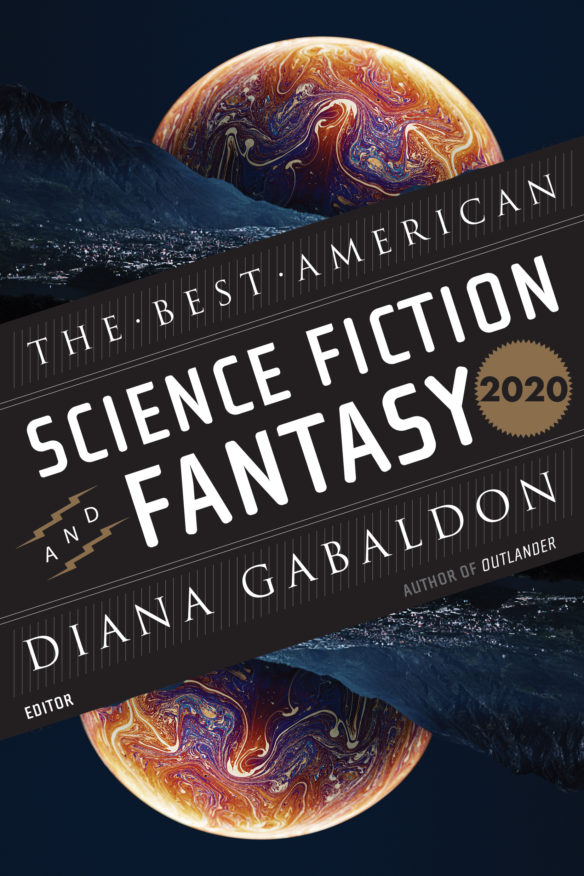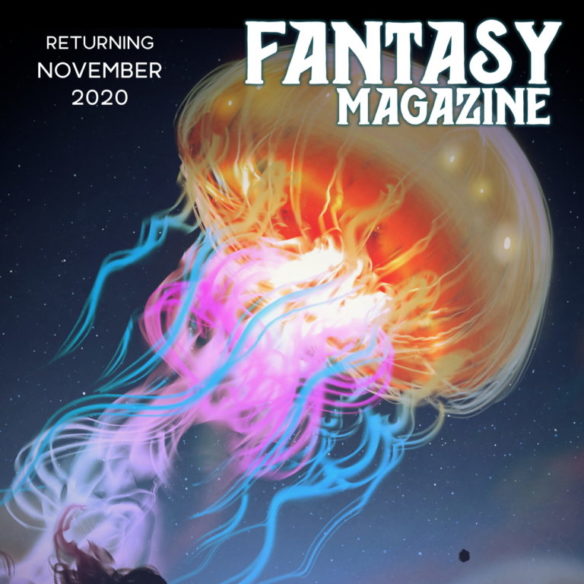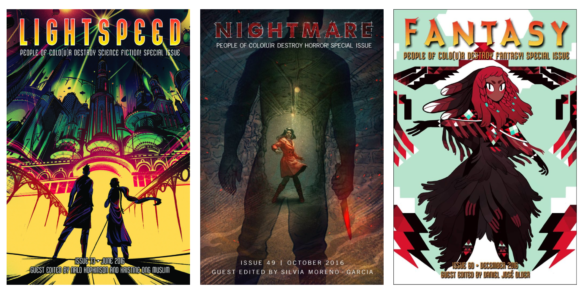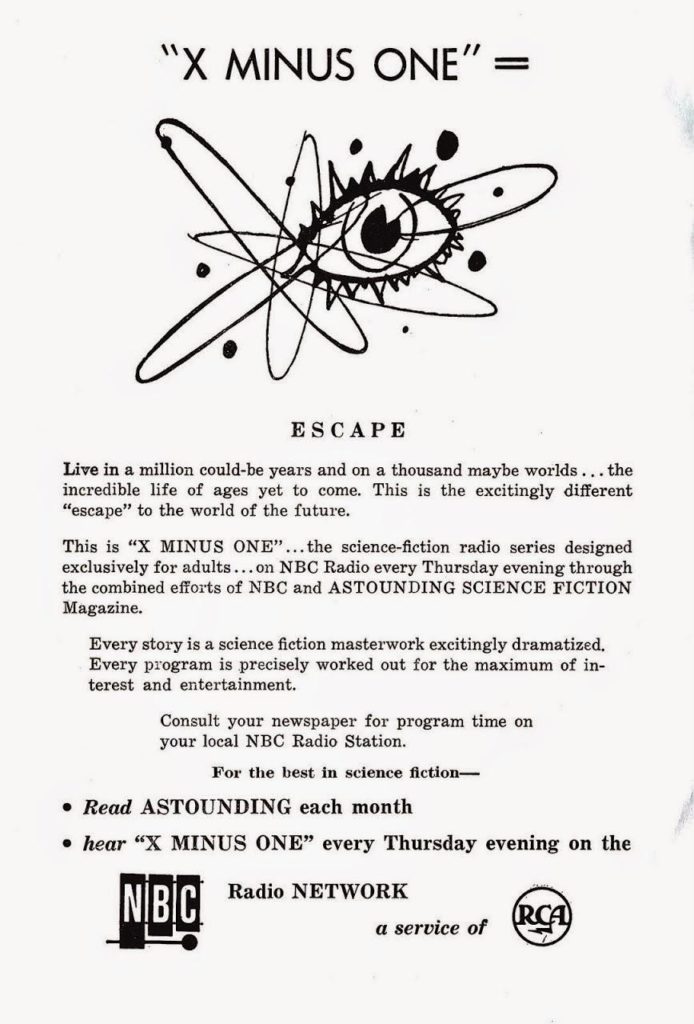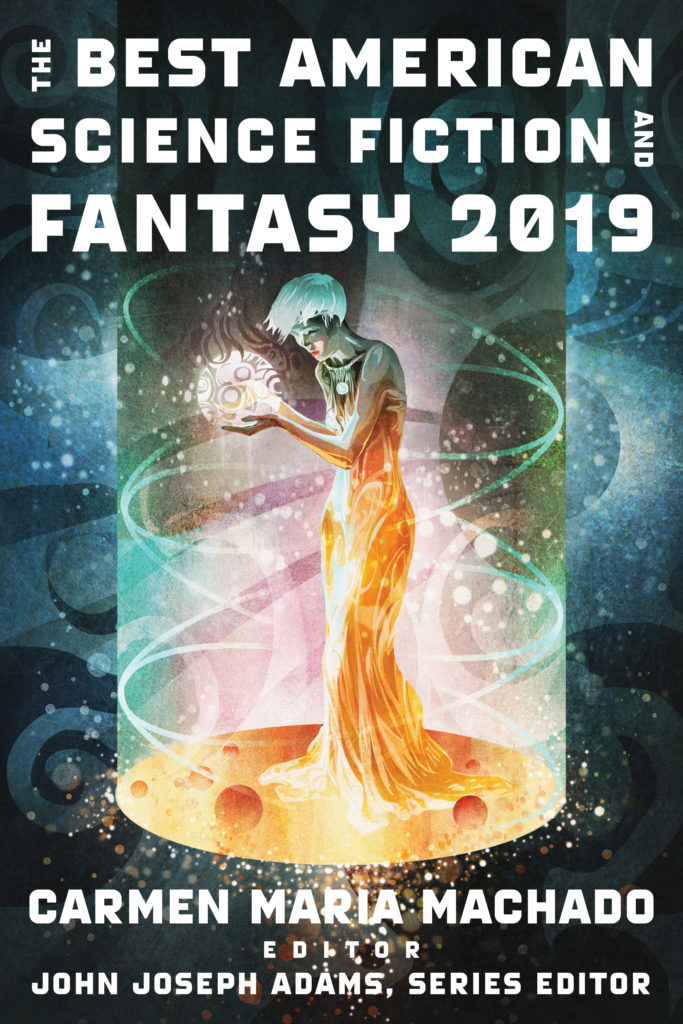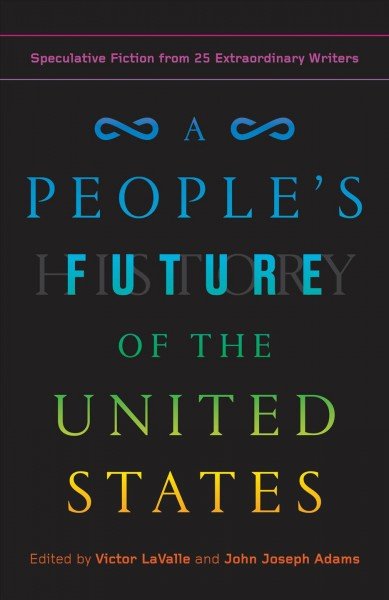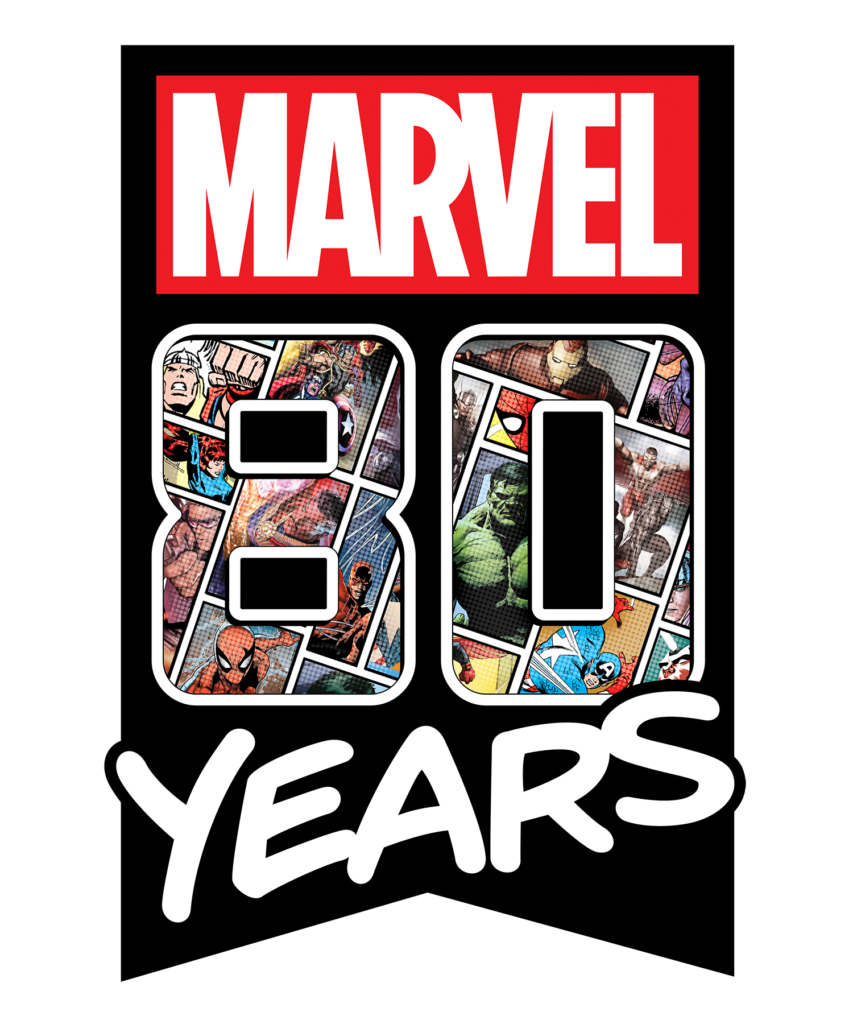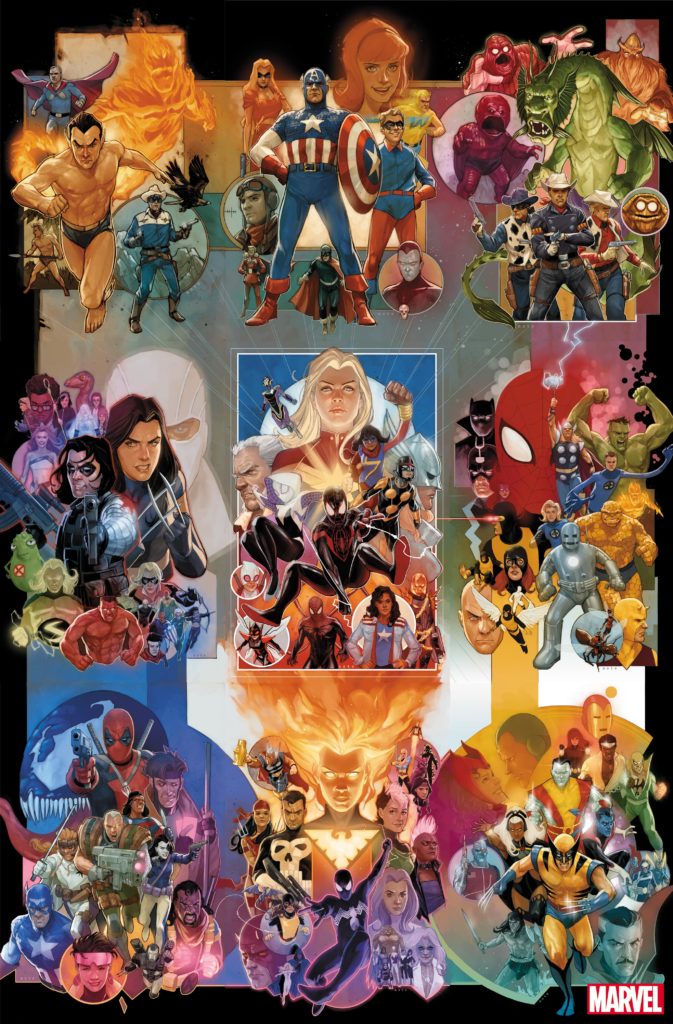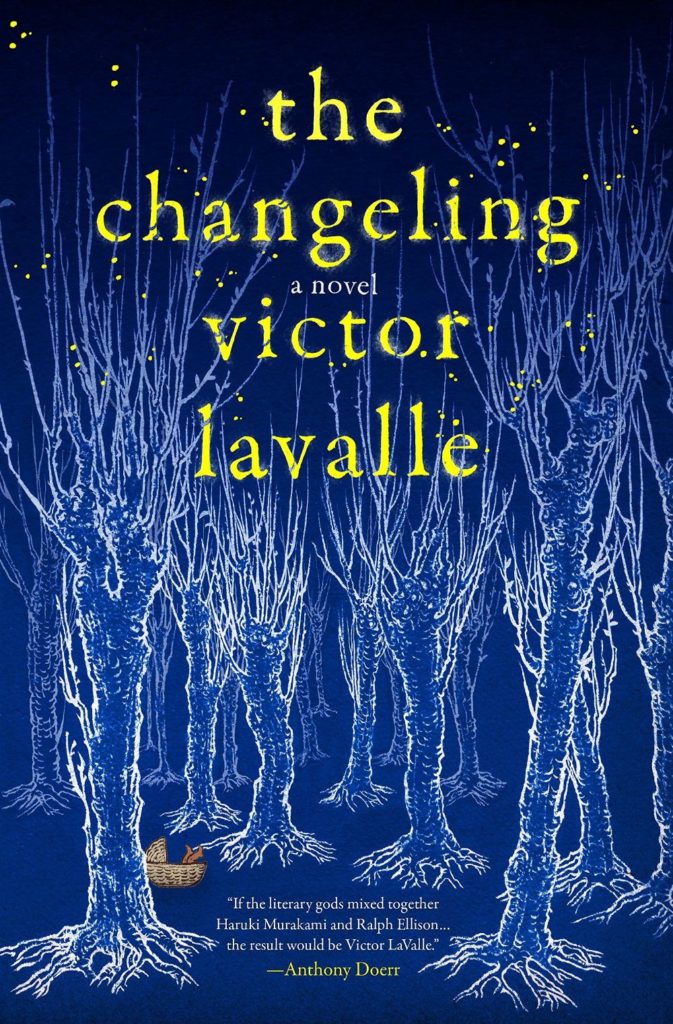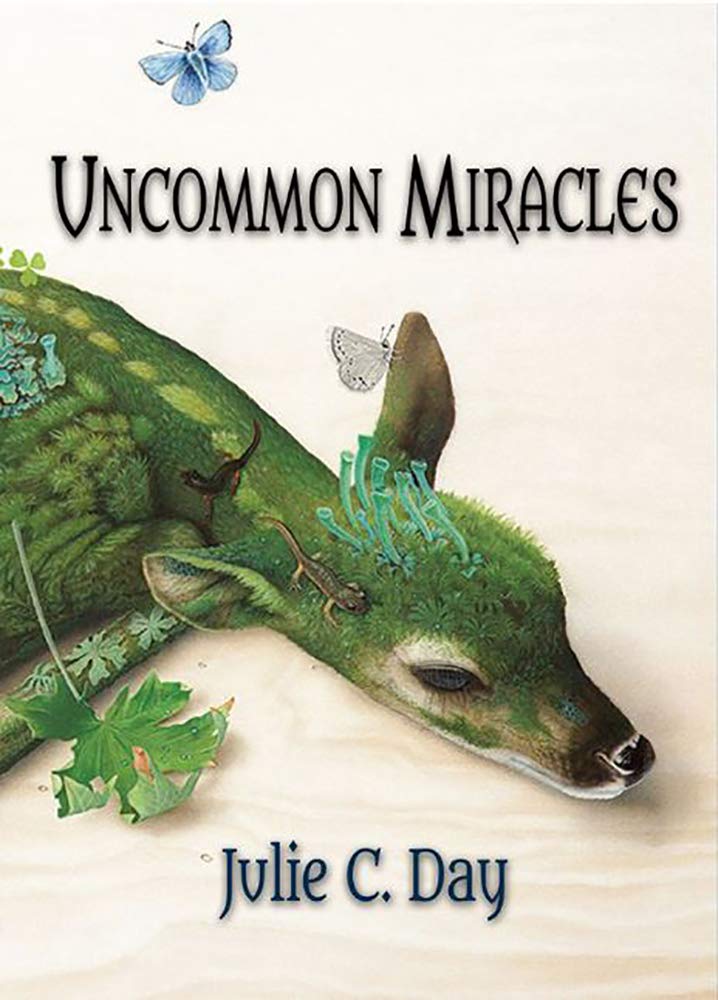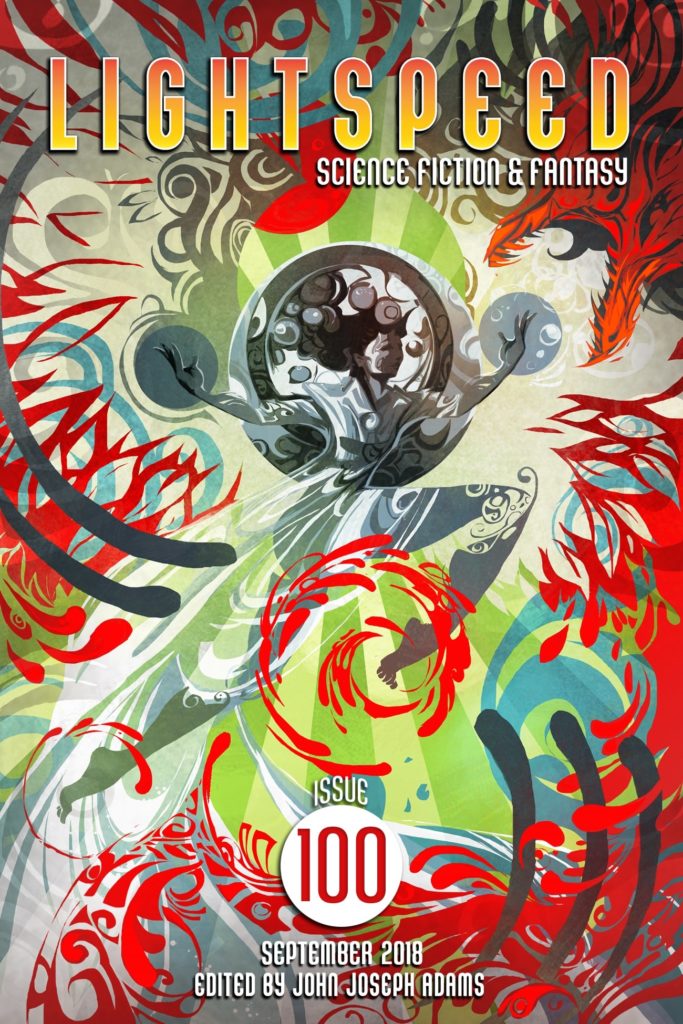(1) CLARION ZOOMS THROUGH THE SUMMER. Join the Clarion Conversations, a series of Zoom-based conversations about writing speculative fiction “with a just tiny fraction of the amazingly talented Clarion alumni, instructor, and broader community.” RSVP each conversation via the links below:
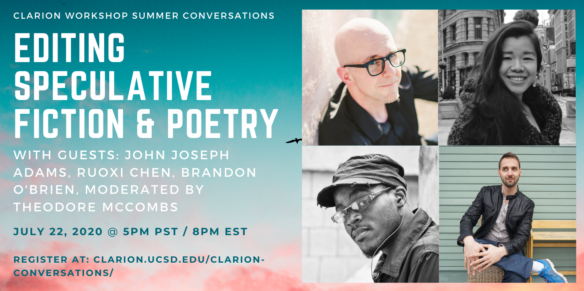
Editing Speculative Fiction and Poetry – July 22, 5pm PT / 8pm ET (register here)
This week, our guests are John Joseph Adams, Ruoxi Chen, and Brandon O’Brien, moderated by Theodore McCombs. We’ll be discussing the state of publishing speculative fiction and poetry and how these three editors approach their work.
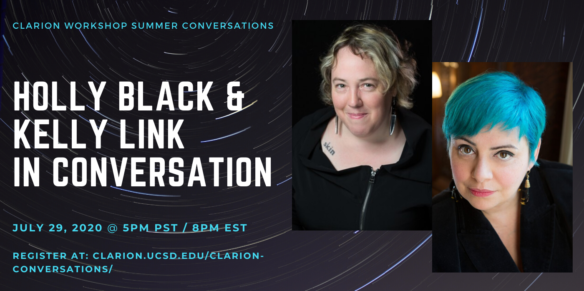
Holly Black and Kelly Link in Conversation – July 29, 5pm PT / 8pm ET (register here)
For our final week, we’re thrilled to have the incredible Holly Black and Kelly Link in conversation about craft, community, surviving as a writer, and what Clarion has meant to them.
(2) GIBSON Q&A. CNET has questions: “Future shocks past and present: William Gibson on fiction’s fear of tech”.
…”In my early teens, I assumed science fiction was about the future,” Gibson says of his days reading writers like Robert Heinlein. “But it was about how the future looked to Robert Heinlein in 1942, which was very different to how the future looked to him in 1960. By the time I began to write science fiction, I took it for granted that what I was doing was writing about the present.”
(3) FROG FLAVORED CANDY? “A ‘Mandalorian’ PEZ Dispenser Gift Set Is Coming And It Will Be An Instant Collectable” – Delish heralds the news.
…The Baby Yoda dispenser comes in a set along with a Mandalorian dispenser and grape, lemon, and strawberry PEZ candy. The new Harry Potter dispensers are already available on the PEZ site, but the Mandalorian candy set is not, so it’s unclear when exactly these will be available online or if they’ll be available in stores as well.

(4) MUSLIM SFF WRITERS PROFILED. Aysha Kahn of the Religion News Service has a piece about the rising number of Muslims writing sf and fantasy, citing the works of G. Willow Wilson, Saladin Ahmed, and S.A. Chakraborty. “Through sci-fi and fantasy, Muslim women authors are building new worlds”.
In the past few years, Muslim women have quietly taken the speculative fiction publishing industry by storm, earning rave reviews with fantasy and science fiction narratives that upend both the genre’s historic lack of diversity and popular depictions of women and Islam.
Last year alone, mainstream publishing houses released at least 13 fantasy and sci-fi books written by Muslim women in English, from Farah Naz Rishi’s debut “I Hope You Get This Message” to Karuna Riazi’s middle-grade novel “The Gauntlet.”
At least another dozen, including sequels to Hafsah Faizal’s instant New York Times bestseller “We Hunt the Flame” and Somaiya Daud’s award-winning “Mirage,” are in the works….
(5) LEADING WITH A TRAILER. Yahoo! Entertainment says a new series scored a two-fer: “The New Mutants gets a new trailer and a virtual Comic-Con panel”.
(6) LEWIS OBIT. Civil Rights legend Rep. John Lewis died died July 17 of cancer.
…His passion for equal rights was backed by a long record of action that included dozens of arrests during protests against racial and social injustice.
A follower and colleague of Martin Luther King Jr., he participated in lunch counter sit-ins, joined the Freedom Riders in challenging segregated buses and — at the age of 23 — was a keynote speaker at the historic 1963 March on Washington.
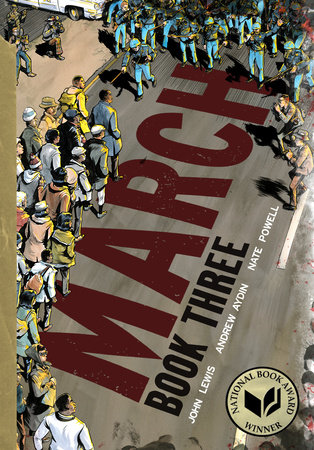
When Rep. John Lewis and Andrew Aydin wrote a graphic novel trilogy March about the Civil Rights Movement, Lewis went to Comic-Con to promote it.
All three March books were Eisner Award nominees — the second and third volumes won the award (2016, 2017). Lewis received San Diego Comic-Con’s Inkpot Award in 2017.
(7) SUSAN SHAW OBIT. The Guardian profiled technology preservationist Susan Shaw, who died June 13 at age 88.
Founder of the Type Archive dedicated to rescuing the remains of the letterpress printing industry
In 1970 the price of lead went through the roof, and the art, craft and industry of letterpress printing, essentially unchanged for five centuries, became suddenly vulnerable. Property speculators, rival technologies and alternative media all threatened a world dependent on precision engineering and subtle manual skill. To Susan Shaw, who has died aged 87, this was a challenge to which she devoted the rest of her life, and in 1992 she founded the Type Museum (now the Type Archive) in Stockwell, south London, to rescue the remains of the dying industry.
In that year, the Monotype Corporation, pioneers of the leading type-composition system, went into liquidation. Susan went to Salfords, near Redhill, Surrey, where the Monotype factory was, saw the size of the plant, and planned to take it over. She chatted up the owners of a 1900 industrial complex near her home in Stockwell, and persuaded them to sell it to a trust set up for the purpose, borrowing the money.
The main building had been a veterinary hospital, with floors solid enough to support circus elephants, and now heavier stuff. She next organised the transport of plant, keyboards, casting machines and associated equipment, together with all the records of the corporation worldwide, altogether several hundred tons. She called its transport and reinstallation Operation Hannibal, and an elephant became her trademark.
(8) MEDIA BIRTHDAY.
- July 18, 2006 — Eureka premiered on the Sci-Fi Channel. In syndication, it was renamed A Town Called Eureka. It was created by Andrew Cosby who was responsible for the rebooted Hellboy film and Jaime Paglia who’s executive producer of the current Flash series. No, it doesn’t tie into the CW continuity but it did tie-in to the Warehouse 13 reality. It would last six seasons and seventy episodes with an additional eight web episodes forming the “Hide and Seek” story as well. The large ensemble cast included Colin Ferguson, Salli Richardson-Whitfield, Joe Morton, Debrah Farentino, Jordan Hinson, Ed Quinn, Erica Cerra, Neil Grayston, Niall Matter, Matt Frewer, Tembi Locke and James Callis.
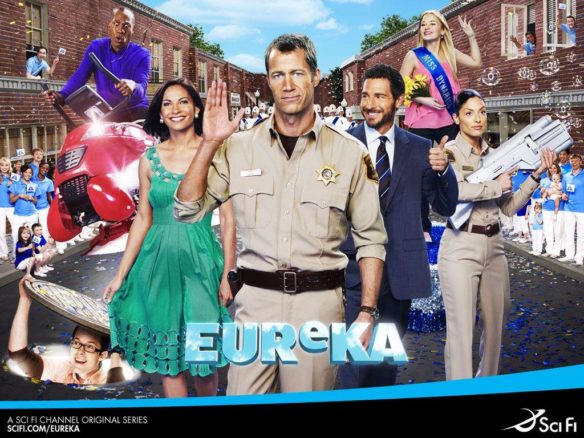
(9) TODAY’S BIRTHDAYS.
[Compiled by Cat Eldridge and John Hertz.]
- Born July 18, 1896 – Otto Gail (rhymes with “pile”). Science journalist and author; among the most popular German 1920s SF authors. Member of the German Interplanetary Society, knew Oberth and Valier. Five technologically realistic novels for us including juveniles, five nonfiction including a 20-booklet series. (Died 1956) [JH]
- Born July 18, 1913 — Red Skelton. Comedian of the first order. The Red Skelton Hour ran for three hundred and thirty-eight episodes. He’s here because ISFDB says he wrote A Red Skelton in Your Closet which was also called Red Skelton’s Favorite Ghost Stories. He also has cameos in Around the World in Eighty Days and Those Magnificent Men in their Flying Machines, both of which I consider genre adjacent. (Died 1997.) (CE)
- Born July 18, 1913 — Marvin Miller. He is remembered for being the voice of Robby the Robot in Forbidden Planet. He would reprise that role myriad times in the next few decades in such films and series as The Invisible Boy, the Lost in Space series and Gremlins. (Died 1985.) (CE)
- Born July 18, 1921 – John Glenn. In fact he never liked science fiction, or what he knew of it, perhaps thinking, in a reverse of James Bond, “It lives better than it reads”. First-rate US Marines pilot (6 Distinguished Flying Crosses, 18 Air Medals); first supersonic flight across the US; only person to fly in both the Mercury and Space Shuttle programs; six terms as US Senator (Democrat – Ohio); flew on the Discovery at age 77 to help study Space and human age. NASA Distinguished Service Medal, US Astronaut Hall of Fame, Congressional Gold Medal, Presidential Medal of Freedom. Memoir, John Glenn. (Died 2016) [JH]
- Born July 18, 1938 — Paul Verhoeven, 82. Responsible for Starship Troopers, Total Recall, Hollow Man and Robocop. He’s made the short list for the Hugo for Best Dramatic Presentation three times (Starship Troopers, Total Recall and Robocop) but was not won it. (CE)
- Born July 18, 1943 — Charles G. Waugh, 77. Anthologist who is amazingly prolific. I count over two hundred anthologies, most done with co-anthologists, and many done with Martin Greenberg. Oft times a third anthologist would be listed, i.e. Poul Anderson for Terrorists of Tomorrow, or Isaac Asimov for Isaac Asimov’s Wonderful Worlds of Science Fiction series. (CE)
- Born July 18, 1950 – Jay Kinney, 70. Bijou Funnies with R. Crumb, Jay Lynch, Skip Williamson. Hasn’t published his fanzine in a while, but here is a cover for Chunga (L to R, Hooper, Byers, juarez); here is a wise comment; here is his Clinic of Cultural Collison (noting Vaughan Bodé, who died on this day, 1975; name shared by Tex Jarman’s Uncle Bodie); here is “Welcome to the Late Show” for the Eagles. Letters in Banana Wings, Raucous Caucus (Relapse has, alas, relapsed). [JH]
- Born July 18, 1963 – Sue Mason, 57. Standing for TAFF (Trans-Atlantic Fan Fund) she called herself “gamer, filker, costumer, dealer, apahack” modestly omitting she’s among our best fanartists. She won; we must’ve forgiven her. Ten covers, two hundred interiors, for Attitude, Banana Wings, Bento, Challenger, Idea, QuasiQuote, Twink. Eight Nova Awards as Best Fanartist, two Hugos. Part of the PLOKTA Cabal (PLOKTA = Press Lots Of Keys To Abort, the Journal of Superfluous Technology). Guest of Honor at Eastercon 55 (British nat’l convention), Minicon 38. MC’d the Masquerade costume competition at Intersection the 53rd Worldcon. Artwork for Aussiecon 4 the 68th Worldcon. Doc Weir service award. Rotsler Award, later judge. [JH]
- Born July 18, 1966 — Paul Cornell, 54. Author of both the Shadow Police series and the Witches of Lychford novella series which are quite excellent as well as writing a lot of television scripts for Doctor Who, Primeval and Robin Hood. He was part of the regular panel of the SF Squeecast podcast which won two Hugo Awards for Best Fancast. And he scripted quite a bit of the Captain Britain and MI: 13 comic series as well — very good stuff indeed. (CE)
- Born July 18, 1972 – Eve Marie Mont, 48. Time-travel tales send highschooler Emma Townsend into worlds she met in fiction, A Breath of Eyre, A Touch of Scarlet, A Phantom Enchantment. “I shouldn’t love Rochester [in Jane Eyre]… dark, arrogant, moody, mistakes in his life that are seriously hard to overlook…. I teach high school, and the teens I know are a far cry from the ones portrayed in the media…. It’s that sense of wonder and possibility in YA literature that really excites me.” Sponsors her school’s literary magazine. [JH]
- Born July 18, 1982 — Priyanka Chopra, 38. As Alex Parrish in Quantico, she became the first South Asian to headline an American network drama series. Is it genre? Maybe, maybe not, though it could fit into a Strossian Dark State. Some of her work in her native India such as The Legend of Drona and Love Story 2050 is genre as Krrish 3, an Indian SF film she was in. She’s got a major role in the forthcoming Matrix 4 film. (CE)
- Born July 18, 1990 – Kyle Muntz, 30. Five novels, poetry (is poetry fiction?), two shorter stories, dark-fantasy game The Pale City (also the name of his Website). Sparks Prize. Interviewed in Lightspeed. Has read two translations of Tu Fu (or, if you prefer, Du Fu), ranks them well above Zen and the Art of Motorcycle Maintenance. By turns impish and sinister. [JH]
(10) COMICS SECTION.
- I deny posing for today’s Half Full.
(11) SUMMERTIME. Six critics lavish affection on “My Favorite Summer Blockbuster” in the New York Times. Lots of genre – you’re not surprised, are you? And it’s not all Marvel – though I was less impressed to see someone reach back in time for this film once I saw the call-out for its availability on the new Disney+ service.
Monica Castillo: ‘Who Framed Roger Rabbit’
Little was conventional about Robert Zemeckis’s 1988 film, “Who Framed Roger Rabbit,” which helped make it the highest-grossing film that summer and the year’s second top box office draw (behind “Rain Man”). This seedy drawing of Tinseltown took inspiration from film noir, and its story was set in the golden age of Hollywood studios, many of which were then in decline….
(12) COMPLAINT DEPT. But meanwhile, back in the U.K. — “‘Joker’ Tops U.K. List of Most Complained About Films in 2019, but Can’t Beat ‘The Dark Knight’”.
The British Board of Film Classification (BBFC) has confirmed Todd Phillips’ R-rated comic book drama “Joker” was the most complained about movie in the United Kingdom last year. The BBFC’s annual report has “Joker” topping the list of most complained about films with 20 complaints filed in regards to the movie’s age 15 classification.
The majority of complaints against “Joker” argued the film should’ve received an age 18 rating due to “violence and tone,” while a select few said the BBFC should’ve banned the movie altogether. The BBFC defended the age 15 rating for “Joker” because the film “doesn’t dwell on the infliction of pain or injury in a manner that requires an 18.”…
(13) SPEAK, MEMORY. In “Sleeping Next To An Elephant”, The Hugo Book Club Blog weighs in on a Best Novel finalist.
It’s often said in Canada that living next to the United States is like sleeping with an elephant: affected by every twitch and grunt. It’s a phrase that came to mind when reading Arkady Martine’s debut A Memory Called Empire, a sprawling and richly imagined novel about hegemony and loss of culture.
Set in the capital city of the vast Teixcalaanli interstellar empire, A Memory Called Empire follows Mahit Dzmare the new ambassador from the much smaller Lsel Stationer Republic as she investigates the murder of her predecessor and navigates a political crisis that could spell disaster for both nations.
Martine has delivered one of the most Asimovian science fiction novels we’ve read in recent memory, while making the narrative uniquely her own.
(14) VIRTUAL STAGE PLAY. Otherworld Theatre, Chicago’s premier science fiction and fantasy theatre will present Of Dice And Men – A Play about Dungeons and Dragons on their YouTube page on July 31 and will remain available for free until August 14, at which point it will move to Otherworld’s Patreon page. Tickets are FREE and can be obtained from Eventbrite or by subscribing to Otherworld’s YouTube page here.

(15) VIDEO OF THE DAY. “Let’s Work Together” on YouTube is a new collaboration between William Shatner and Canned Heat, which will be one track on a new blues album Shatner will release this fall.
[Thanks to JJ, Mike Kennedy, Chip Hitchcock, Olav Rokne, Michael Toman, John Hertz, Cat Eldridge, John King Tarpinian, Martin Morse Wooster, and Andrew Porter for some of these stories. Title credit goes to File 770 contributing editor of the day Patrick Morris Miller.]

